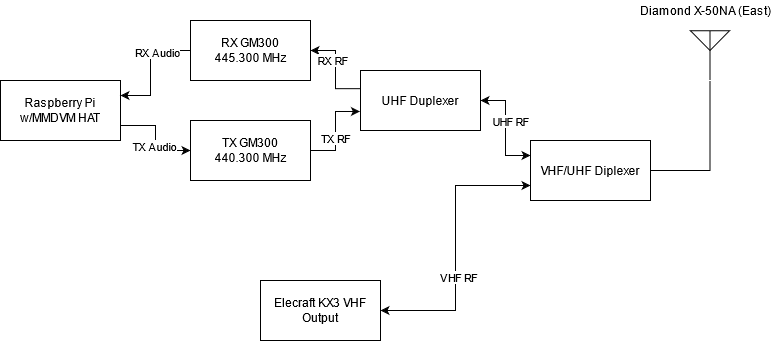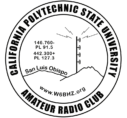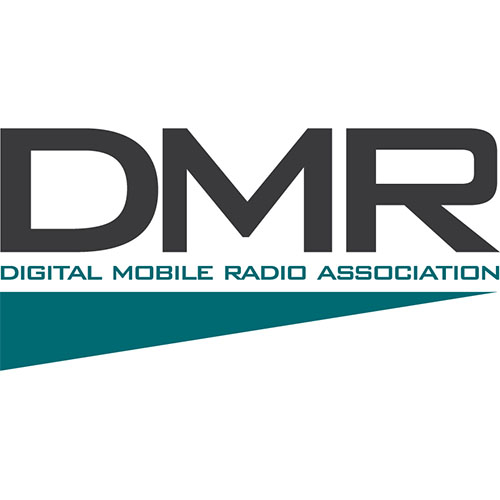W6BHZ maintains cross-linked analog repeaters on 2 meters and 70 centimeters. Both repeaters are located in the Administration Building on the Cal Poly campus. The 2-meter repeater is a Kenwood TKR-750, installed in September 2004. The 70-centimeter repeater is a Kenwood TKR-850, and it was installed in June 2004.
Echolink 
W6BHZ now operates the Echolink node W6BHZ-R. The Echolink node is running on a raspberry pi 4 with an AllStar Link instance running on the pi. The pi is connected directly to the repeater in the admin building via port 3 on the RLC club Deluxe II repeater controller.
.Connection Instructions
• If you have not, downloaded and open Echolink. Upon downloading, you must verify your status as an amateur radio operator
• Ensure that you are marked as “Online.”
• Search for “W6BHZ-R” and click to join the repeater.
• Click on the push-to-talk to transmit. Ensure that Echolink has permission to use your microphone and that all of your sound settings are correct.
• Click the push-to-talk again to stop transmitting. You will not be able to hear the repeater until after your squelch closes, which may suffer from a delay. The Echolink software can be downloaded from here, and the software’s user guide can be found here. If you are on a mobile device or a different OS, you may need to download a different version.
AllStar 
The club also hosts an AllStar node (#52768) instance on the same Raspberry Pi that hosts Echolink. The AllStar Link configuration is set up such that any user can connect to the repeater from it. We ask that you please be mindful of linking repeaters (especially high-traffic ones) to ours during reserved times (nets and event operations). A calendar of such times can be found on this website.
Connection Instructions
• if you live close to an Allstar-enabled repeater and with the repeater owner’s permission, press the PTT button on your radio and dial *352768, which will connect you to the W6BHZ node. Additionally, if you have a personal AllStar node, you can connect to the repeater through it.
• Speak normally on the radio, and allow for an extra second between keying up and talking to allow the repeaters to link.
• When done with the conversation, press the PTT button and dial *152768 on your radio to disconnect the node.
• More information on AllStar can be found here, and to see if you are successfully connecting to the W6BHZ node you can check the status page here.
DMR Repeater 
We also operate a DMR Repeater on 440.300 MHz, +5 MHz offset, CC 1. The repeater is connected to the BrandMeister global DMR network. It consists of a Raspberry Pi running Pi-Star with an MMDVM dongle connected to 2x Motorola GM300s running 30 Watts into a Diamond X50A on the shack roof. It was installed in February 2020 and covers most of the Cal Poly campus, and some of SLO city. Information on the timeslot/talkgroup arrangement can be found on our BrandMeister page.
Additionally, information on the local K6DOA DMR repeater can be found here.
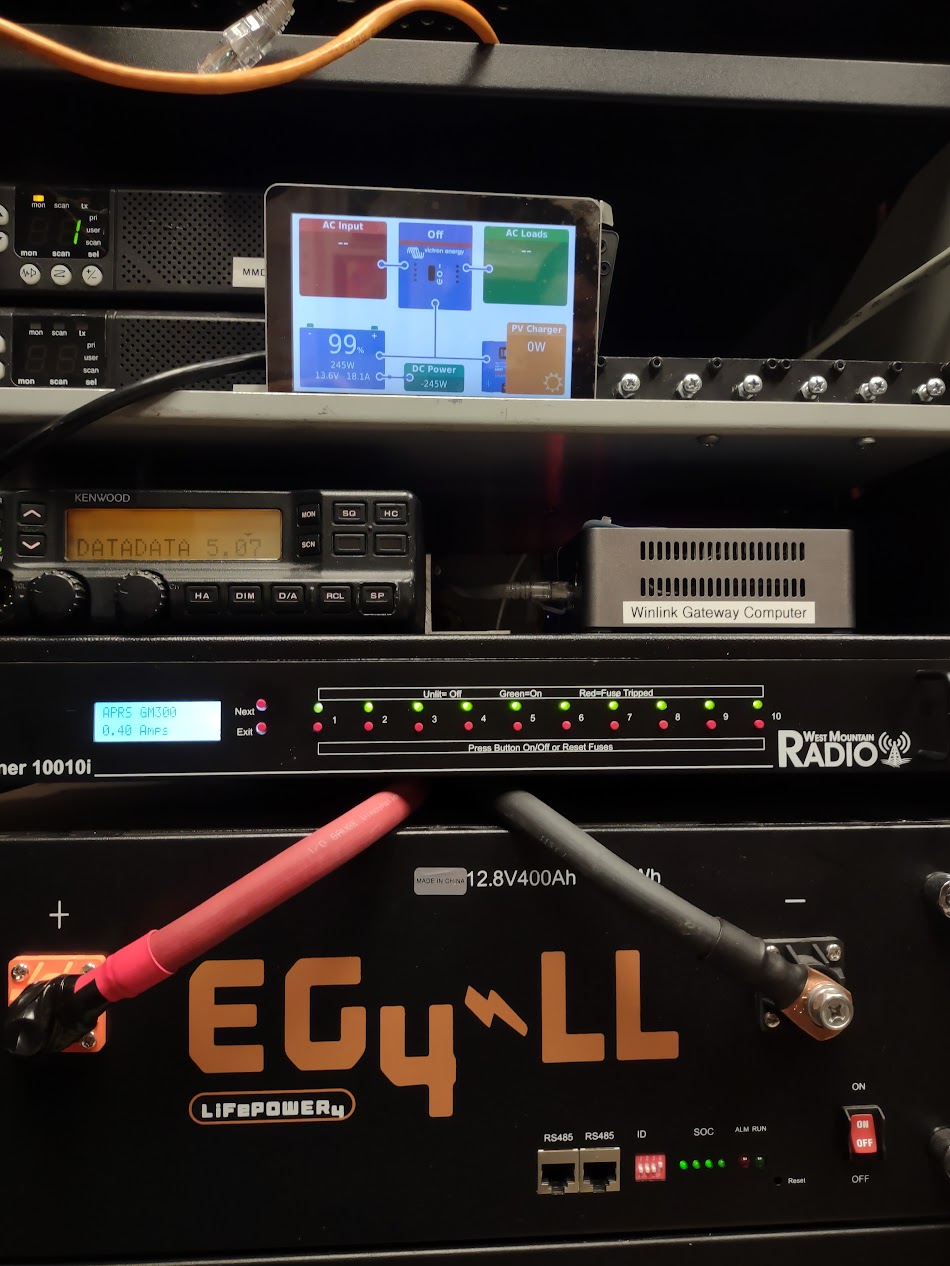
Local Area Codeplug
CPARC has also created a generic radio codeplug for programming your radio with the W6BHZ repeater as well as other local stations (e.g. Tassajara Peak repeaters, SLO EMS, county-wide simulcast, etc.). The CSV file can be downloaded here and uploaded to your radio through Chirp (available here).
W6BHZ Repeater List
| Mode | Band | Frequency | Offset | PL Tone (Hz) | Status | Location |
|---|---|---|---|---|---|---|
| FM | 2 meters (VHF) | 146.760 MHz | -600KHz | 91.5 in, 127.3 out | Operational | Administration Building |
| FM | 70 centimeters (UHF) | 442.300 MHz | +5MHz | 127.3 | Operational | Administration Building |
| DMR | 70 centimeters (UHF) | 440.300 MHz | +5MHz | CC 1 | Operational | CPARC Shack, Bldg 20, Rm 123 |
W6BHZ Repeater GPS Coordinates: 35.301314 N, 120.658565 W
Repeater Coverage Maps
Repeater coverage maps courtesy of K5EHX and KD2BD. Interactive maps can be found here for UHF and here for VHF.
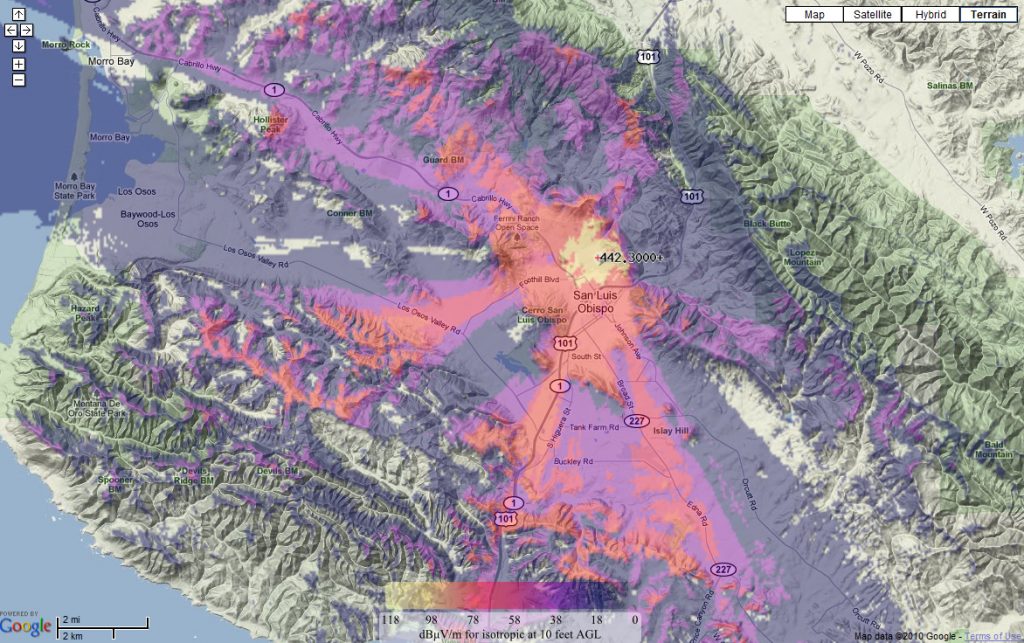
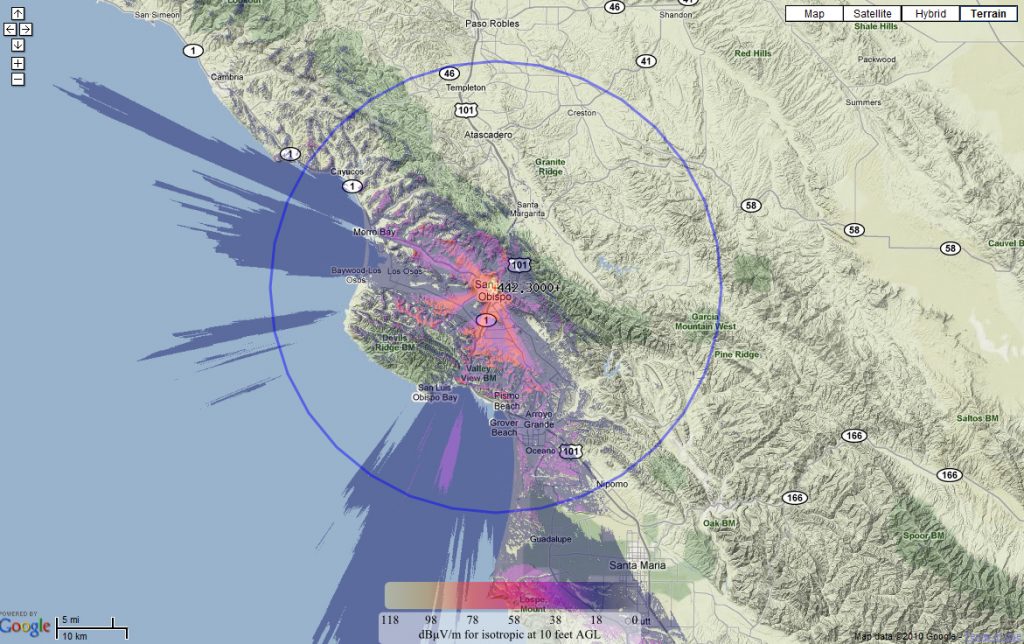
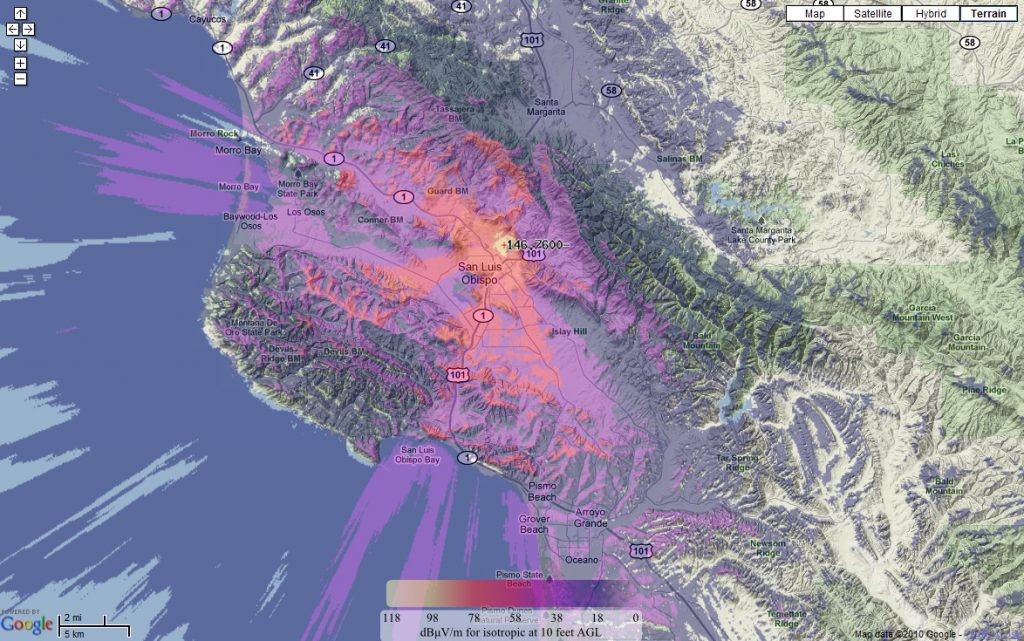
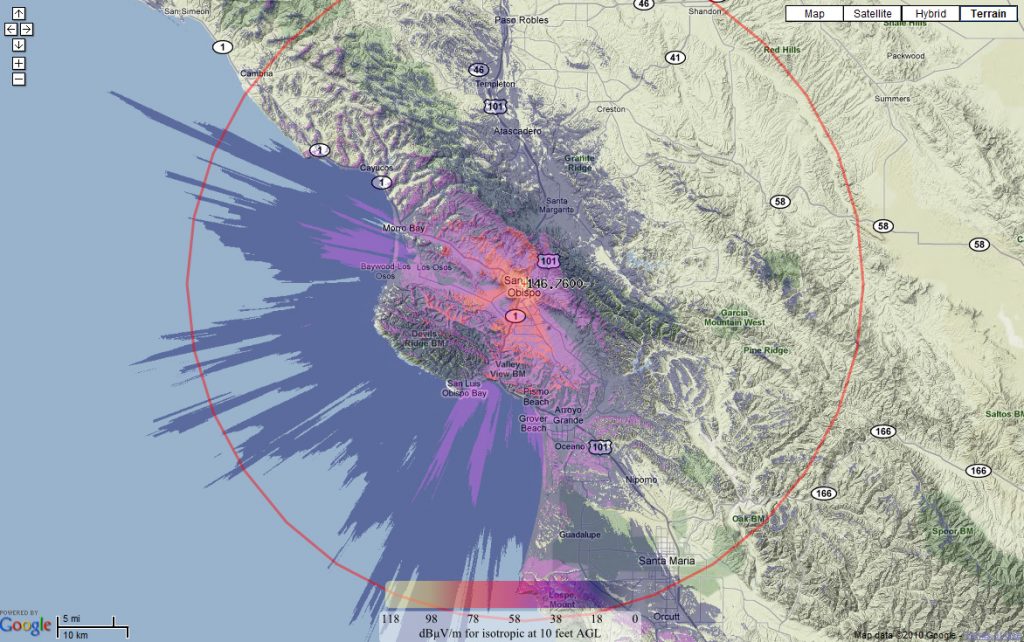
Repeater System Diagram
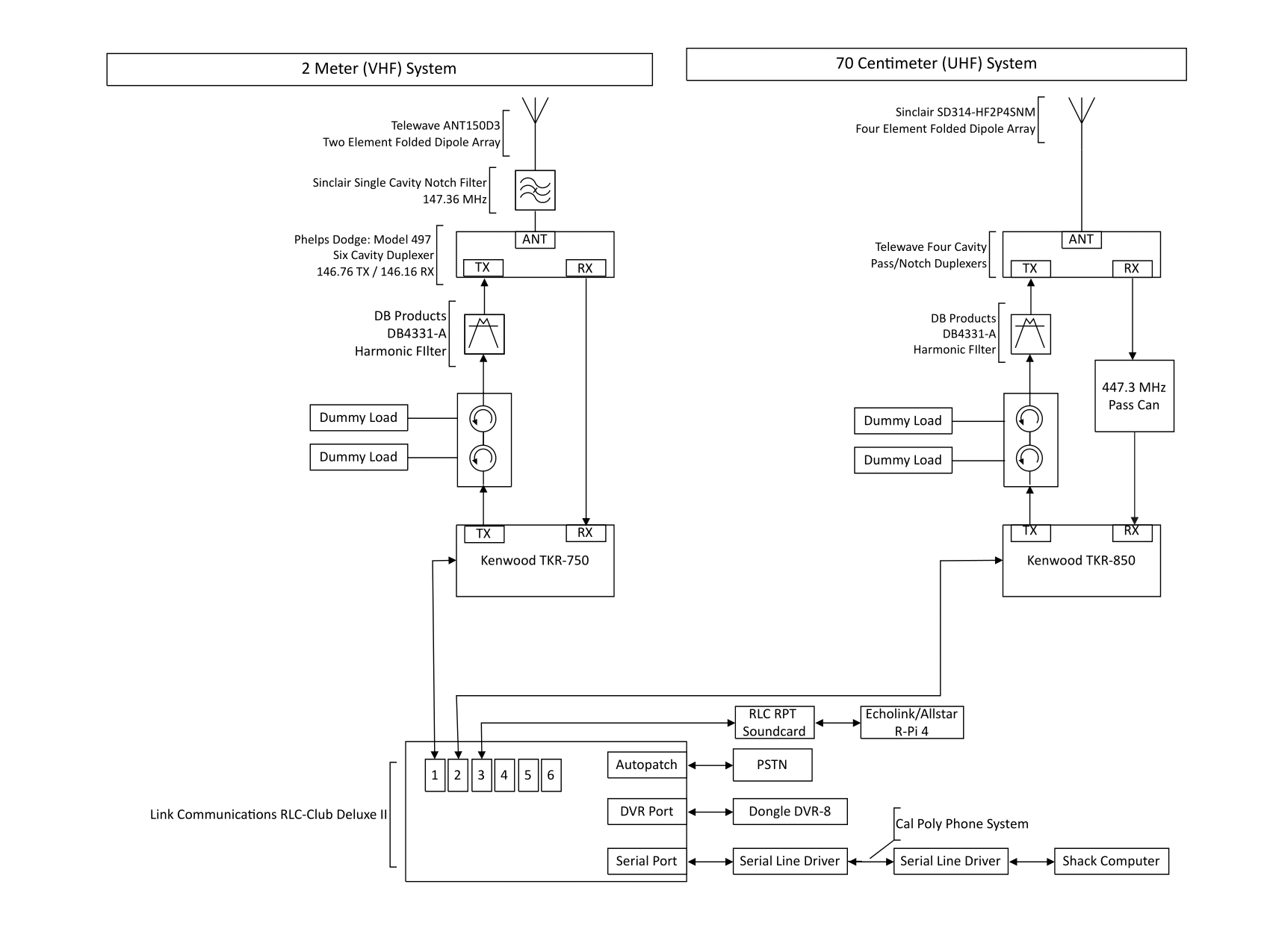
Power
Power comes from a large 13.8V 100A 3-stage power supply used to power all of the public safety radios up at the site. Also connected to the power supply is 800AH of batteries which are used when the AC power system goes offline. The entire building is backed up by a diesel generator.
Admin Building Pictures
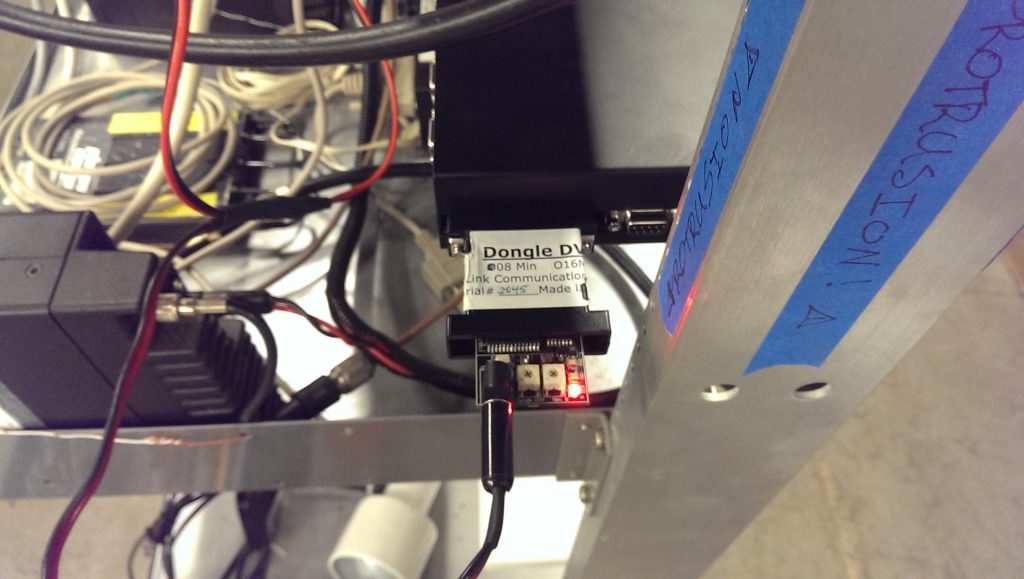
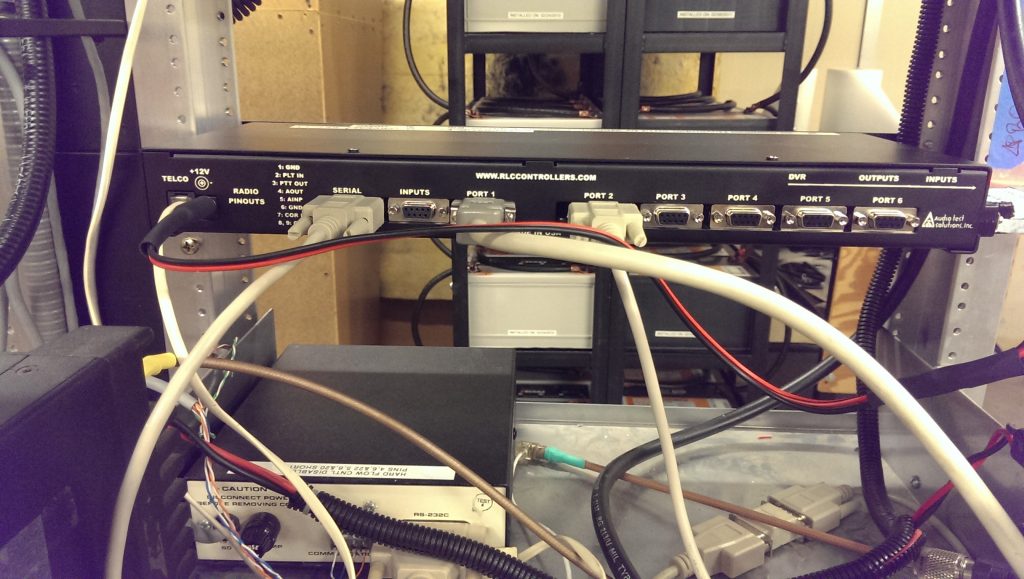
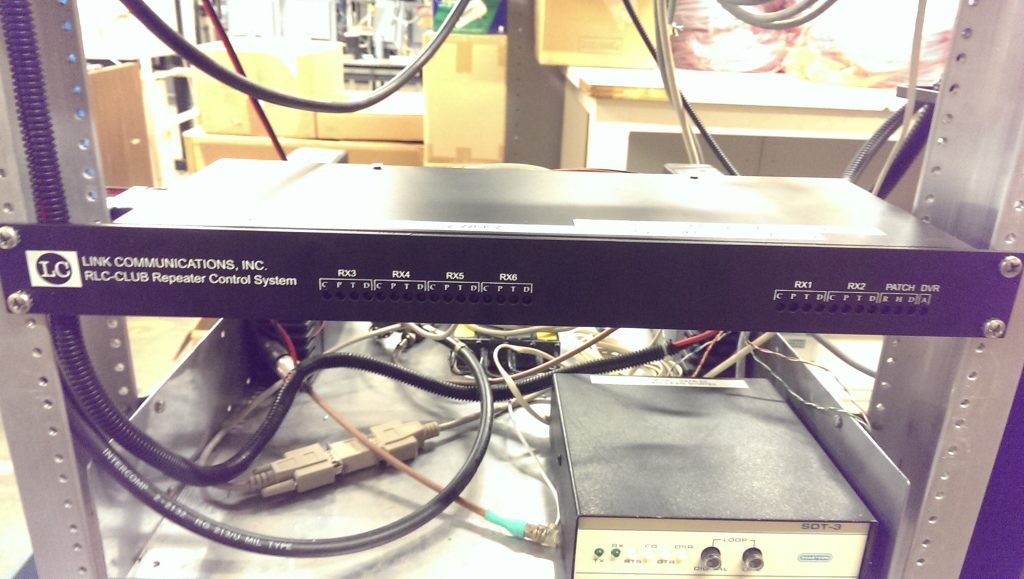
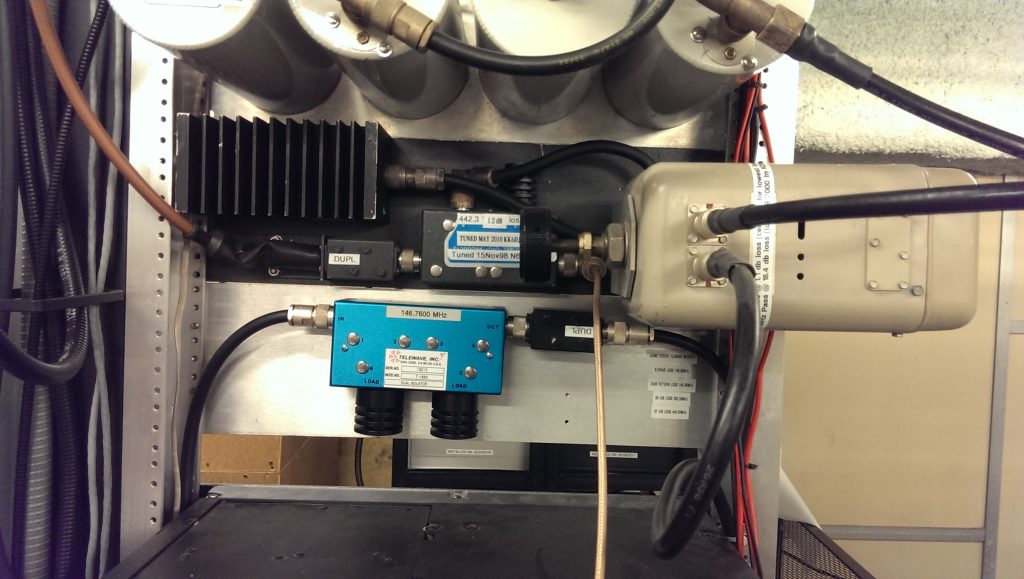
DMR System Diagram
